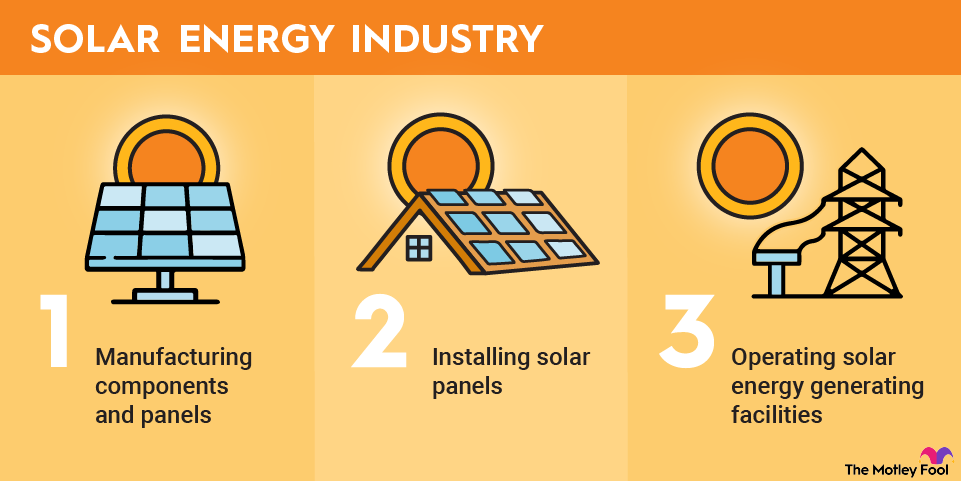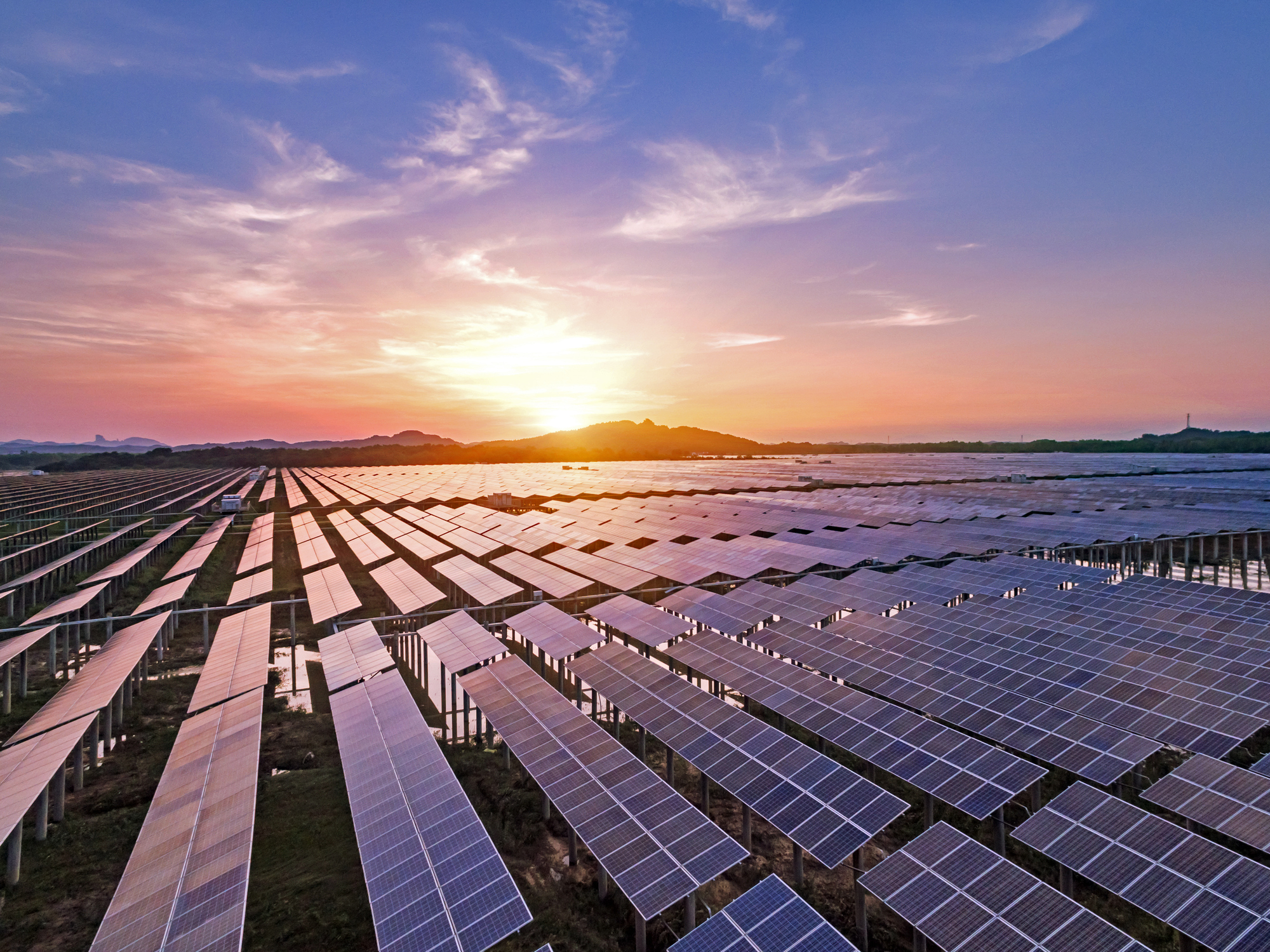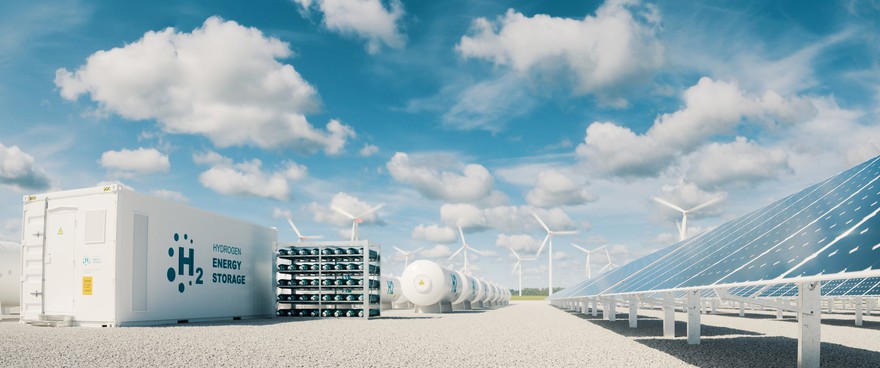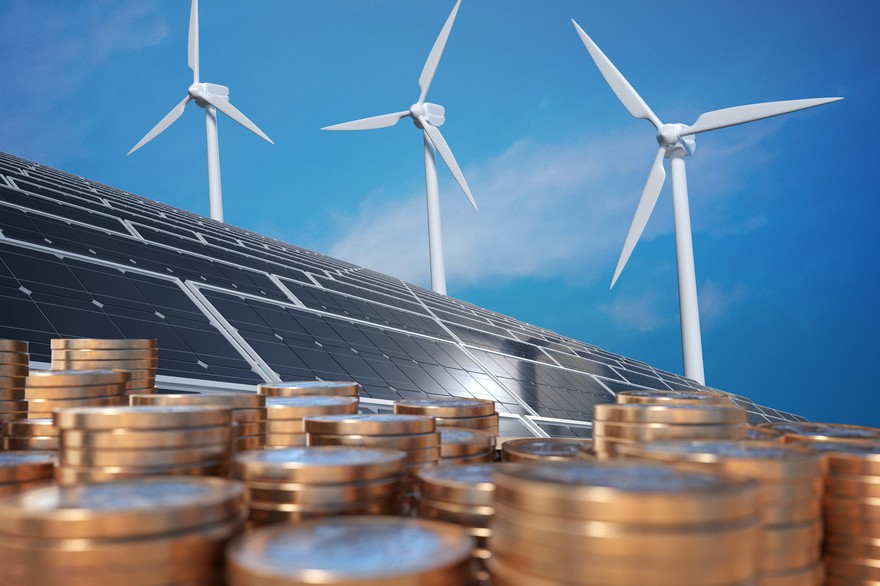The solar energy industry builds and installs devices to capture energy from the sun and convert it into electric power. Companies in the industry are working to transition the global economy from fossil fuels such as oil and natural gas to renewable energy sources. It will take trillions of dollars and many years to complete the transition, making the solar energy industry a compelling opportunity for long-term investors.
The sector encompasses a wide variety of companies with the following functions:

Best solar stocks to invest in 2025
Solar energy represents an enormous market opportunity. Global spending on solar was on track to reach $450 billion in 2025, surpassing all other generation technologies. That annual investment rate will likely rise in the future, powered by growing demand for clean energy, especially from power-hungry data centers used to support artificial intelligence (AI). That technology is driving accelerated electricity demand, making solar's future look even brighter.
Many companies focus on solar energy and should benefit from the sector's growth. However, not all have strategies designed to enhance value for their shareholders. Three solar energy stocks that stand out as the most worthy of investors' consideration are:
Here's why these solar stocks shine brightly in this rapidly expanding industry.
1. First Solar

NASDAQ: FSLR
Key Data Points
First Solar (FSLR +0.02%) is a global leader in developing solar energy solutions. It develops, manufactures, and sells advanced solar modules.
One thing that sets First Solar apart from other solar panel makers is its focus on manufacturing a proprietary, advanced thin-film module. In less-than-ideal conditions, such as low light and hot weather, its panels perform better than competing silicon modules. They're also larger in size, which helps reduce the cost per watt. Those factors make them ideal for utility-scale solar energy projects.
First Solar also distinguishes itself from its peers in the solar sector by having one of the strongest balance sheets. It routinely has more cash than debt (it anticipates closing 2025 with between $1.3 billion and $2 billion in net cash), giving it the financial flexibility to continue executing its strategy of developing and building thin-film solar modules for utility-scale customers, including expanding its manufacturing capacity. First Solar is in an excellent position to thrive as the solar industry continues expanding.
First Solar also has a lot of growth lined up. In late 2025, the company had 64 gigawatts (GW) of total bookings in its backlog, which it expects to deliver over the next several years. Meanwhile, it had another 83.3 GW of booking opportunities in its pipeline. It's investing heavily in expanding its solar panel manufacturing capacity to capitalize on the sector's growth. It's also investing in new solar technologies to stay ahead of the competition. The investments should enable First Solar to expand its revenue and earnings at a rapid rate in the coming years.

2. Brookfield Renewable

NYSE: BEP
Key Data Points
3. Enphase Energy

NASDAQ: ARRY
Key Data Points

NYSE: NEE
Key Data Points
How to invest in solar energy stocks
Anyone can invest in solar energy stocks. Here’s a step-by-step guide on how to add one to your portfolio:
- Open your brokerage app: Log in to your brokerage account where you handle your investments.
- Search for the stock: Enter the ticker or company name into the search bar to bring up the stock's trading page.
- Decide how many shares to buy: Consider your investment goals and how much of your portfolio you want to allocate to this stock.
- Select order type: Choose between a market order to buy at the current price or a limit order to specify the maximum price you're willing to pay.
- Submit your order: Confirm the details and submit your buy order.
- Review your purchase: Check your portfolio to ensure your order was filled as expected and adjust your investment strategy accordingly.










